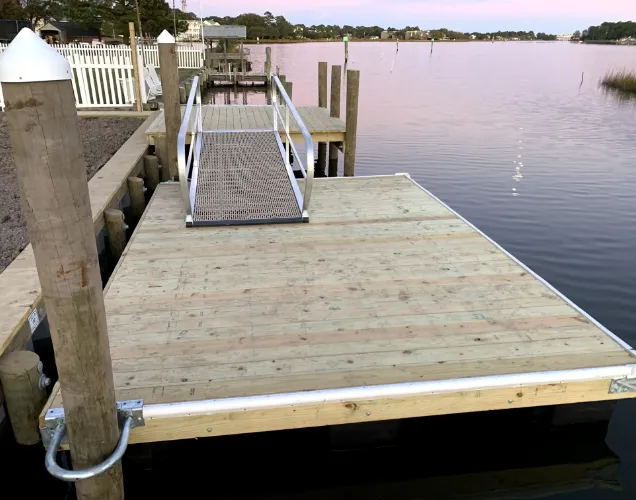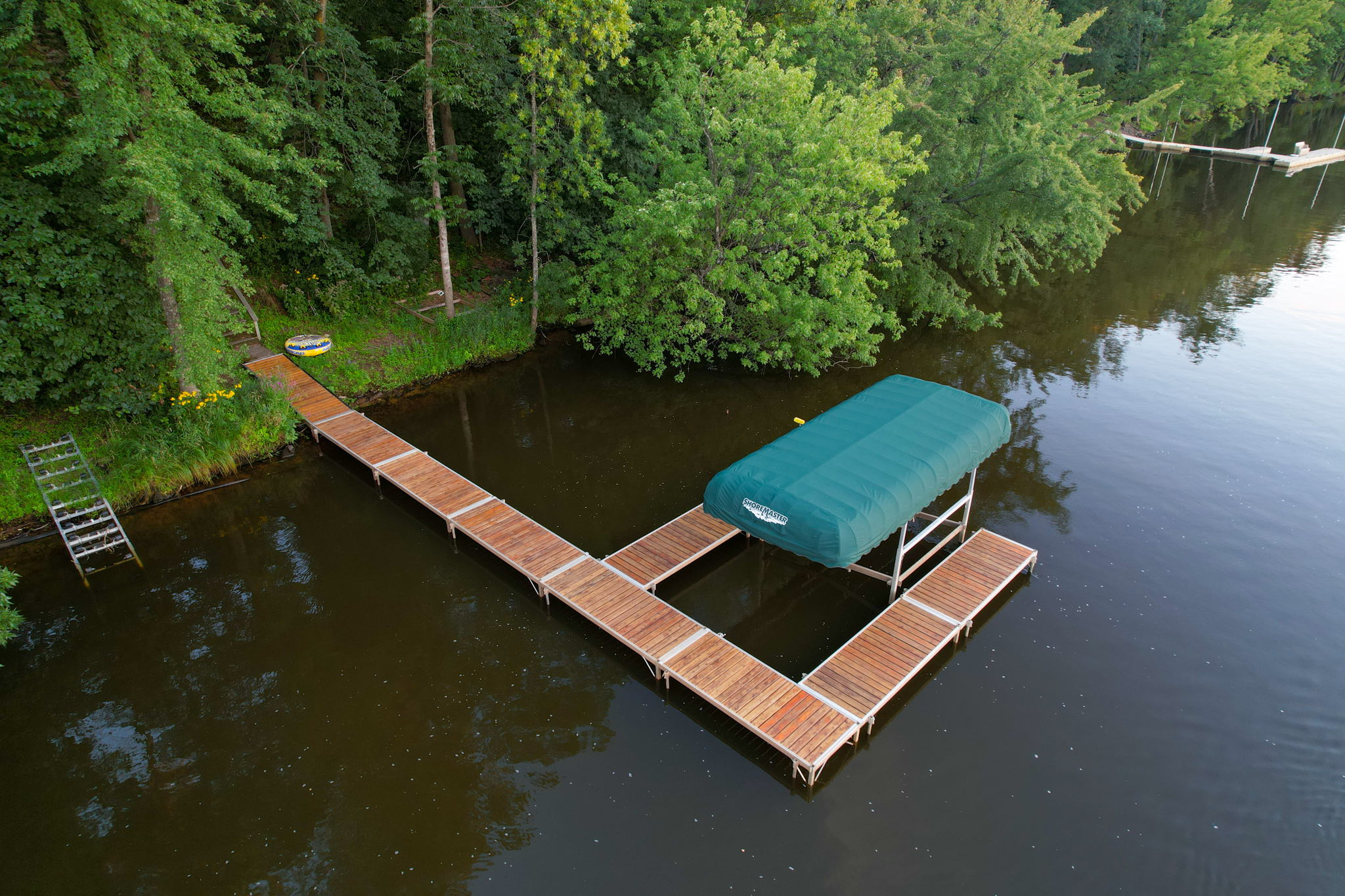Navigating the Options: Picking the Right Dock Company for Your Floating Dock Job
Navigating the Options: Picking the Right Dock Company for Your Floating Dock Job
Blog Article
Create the Perfect Docking Solution With Floating Docks
Floating docks existing a versatile service for a selection of maritime demands, adapting effortlessly to fluctuating water degrees and diverse vessel kinds. As we discover the vital aspects that add to the effectiveness of floating docks, a number of key elements pertaining to security and maintenance will certainly emerge, increasing inquiries about exactly how to enhance your docking experience.

Advantages of Floating Docks
Floating docks offer numerous benefits that make them an optimal option for numerous maritime applications. Among the key benefits is their versatility to transforming water levels. Unlike dealt with docks, floating docks rise and fall with the trend, guaranteeing regular access for vessels. This attribute is especially essential in areas susceptible to substantial tidal variations or seasonal water degree modifications.
Additionally, floating docks are normally simpler and quicker to mount contrasted to standard fixed frameworks. Their modular style allows for straightforward assembly and disassembly, assisting in maintenance and moving when needed. This adaptability is especially valuable for temporary applications or in atmospheres where conditions may alter.
Floating docks also often tend to be much more eco-friendly, as they lessen disruption to the seabed and surrounding aquatic ecological communities. Their buoyant nature reduces the threat of damage to marine life, promoting a much healthier setting. In addition, these docks can be tailored to suit numerous vessel sizes, making certain that they satisfy details operational demands - floating dock builder.
Ultimately, the mix of flexibility, simplicity of setup, and environmental considerations makes floating docks an extremely efficient service for a wide variety of maritime demands.
Selecting the Right Materials
Selecting the suitable products for floating docks is important to guarantee longevity, durability, and stability. The option of materials straight influences the dock's efficiency in various ecological problems, including direct exposure to water, sunshine, and potential wear from aquatic traffic.
Usual materials used for floating docks include aluminum, wood, and high-density polyethylene (HDPE) Light weight aluminum is light-weight, corrosion-resistant, and calls for marginal maintenance, making it an outstanding option for durability. Nonetheless, its preliminary cost can be higher contrasted to various other products.
Wood, while visually enticing and giving a conventional look, can be vulnerable to rot and bug damage otherwise correctly dealt with. Using pressure-treated wood or normally sturdy species like cedar or redwood can reduce these issues.
HDPE is a preferred selection because of its resistance to UV rays and chemicals, together with being environmentally pleasant. floating dock company. It is readily available and light-weight in various shades, permitting customization
Inevitably, the best material selection will rely on certain demands, consisting of budget plan, preferred aesthetics, and environmental factors to consider. Mindful analysis of these aspects will certainly cause a effective and resistant floating dock solution.
Design Considerations for Stability
When creating floating docks, ensuring stability is a fundamental element that can considerably influence their capability and security. Stability in floating dock style is affected by various variables, consisting of buoyancy, weight circulation, and the setup of elements. An optimum buoyancy system must make use of products that provide enough lift while minimizing weight. This balance makes certain that the dock continues to be above water, also under varying tons.
Weight circulation is crucial; equally distributing lots throughout the dock stops tilting and improves stability. Wider styles can offer boosted security, especially in rough water problems, while longer docks may need extra supports to avoid drooping.
An additional crucial consideration is the environmental influence, including directory wave activity and wind. Integrating features such as sidewalls or skirting can aid minimize the impacts of environmental forces, maintaining stability in adverse conditions. Ultimately, a combination of thoughtful design, product choice, and understanding of environmental factors will generate a drifting dock that meets both stability and security requirements.
Setup Tips and Strategies

Next, safeguard the essential permits and abide by regional policies, which might determine installation techniques and ecological factors to consider. Engage a certified contractor experienced in floating dock installments if required. Use premium products made for aquatic atmospheres to enhance resilience and durability.
When positioning the dock, straighten it alongside the shoreline to facilitate simple access. Make sure that the anchoring system is durable, employing cinder block or helical supports to stabilize the dock versus wind and wave action. It's important to represent seasonal water level changes, including possible ice activity in cooler climates.
Throughout the setup, double-check the dock's floatation and stability click for source prior to completing the anchoring. On a regular basis examine the setup for any type of signs of wear or damage. By adhering to these strategies and tips, you can attain a secure, functional, and cosmetically pleasing floating dock setup that meets your demands.
Maintenance and Treatment Standards
Preserving and caring for floating docks is vital to prolonging their life-span and ensuring risk-free use. Regular evaluations must be performed to recognize any type of signs of wear, damages, or marine growth. Seek fractures, loosened installations, or blemished locations on the dock's surface, as these problems can jeopardize structural stability.
Cleaning up is essential. Use a pressure washer to remove algae, barnacles, and debris, which can gather over time. For stubborn development, consider eco-friendly cleansing agents that won't damage aquatic life.
Furthermore, check the mooring lines and anchors regularly to guarantee they are safe and totally free from rust. Change any kind of torn or damaged lines quickly to maintain stability.
Throughout extreme weather, such as tornados or freezing conditions, take preventive procedures. Protect the dock with additional mooring lines and, if viable, eliminate any removable elements to stop damages.
Verdict
In verdict, the execution of floating docks provides a efficient and functional docking solution appropriate for numerous maritime applications. With correct setup and normal maintenance, floating dock company docks can provide efficient and reliable docking experiences for a wide array of vessels.
As we discover the necessary components that add to the efficiency of floating docks, several crucial elements regarding stability and maintenance will emerge, elevating inquiries about exactly how to enhance your docking experience. Unlike taken care of docks, floating docks rise and fall with the tide, making certain regular access for vessels.When developing floating docks, making sure security is an essential element that can considerably affect their capability and safety and security. Security in floating dock layout is influenced by various factors, including buoyancy, weight circulation, and the arrangement of components. Ultimately, a combination of thoughtful design, material selection, and understanding of ecological variables will certainly produce a floating dock that meets both stability and safety needs.
Report this page